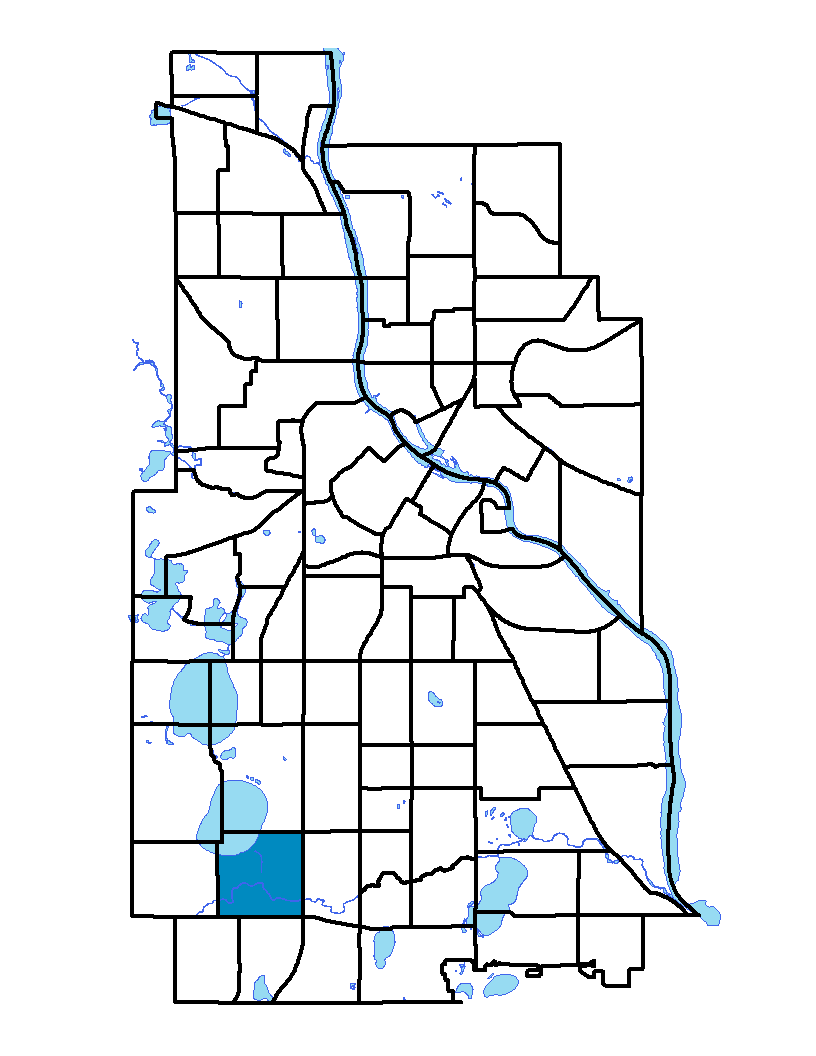Lynnhurst neighborhood is located in southwest Minneapolis at the southern edge of Lake Harriet. Minnehaha Creek runs from north to southeast, bisecting the neighborhood. Lynnhurst extends from Lyndale Avenue to Penn Avenue and from 46th Street to 54th Street. It gets its name from a neighborhood park, located at the intersection of West 50th Street and West Minnehaha Parkway. The park was named for its location in the Lynnhurst Planning District, which was most likely named for the abundance of linden trees in the area. The park's name was adopted in 1921, the same year the 8.21 acres of parkland were purchased. Lynnhurst is a residential neighborhood with most of its housing stock built before 1940.
To learn more about the neighborhood association visit: www.lynnhurst.org
Indicator Details
| Indicators | Primary Domain | Indicator Value |
Rank |
Tier |
|---|---|---|---|---|
| School Proximity to Traffic | Environmental Hazards | -% | - | Data N/A |
| Chronic School Absence | Health Systems and Public Safety | -% | - | Data N/A |
| High School Graduation Rate | Educational Opportunities | -% | - | Data N/A |
| School Readiness Scores | Educational Opportunities | -% | - | Data N/A |
| Food Desert | Neighborhood Characteristics | -% | - | Data N/A |
| Residential Proximity to Traffic | Environmental Hazards | 0.0% | 1 | Top |
| Proximity to Brownfield Sites | Environmental Hazards | 0.0% | 1 | Top |
| Proximity to Superfund Sites | Environmental Hazards | 0.0% | 1 | Top |
| Toxic Releases from Facilities | Environmental Hazards | 0.0% | 1 | Top |
| Offsite Alcohol Outlets | Neighborhood Characteristics | 0.2 | 1 | Top |
| Voter Participation | Social Cohesion | 52.7% | 2 | Top |
| Violent Crime | Health Systems and Public Safety | 17 | 3 | Top |
| Reading Proficiency | Educational Opportunities | 76.3% | 4 | Top |
| Access to Mainstream Financial Services | Economic Health | 8.6% | 4 | Top |
| Adult Educational Attainment | Educational Opportunities | 98.7% | 5 | Top |
| Preventable Hospitalizations | Health Systems and Public Safety | 1.3 | 8 | Top |
| Motor Vehicle Collisions | Health Systems and Public Safety | 1.1 | 9 | Top |
| Excessive Housing Cost Burden | Housing | 19.5% | 10 | Top |
| Residential Mobility | Social Cohesion | 88.2% | 11 | Top |
| Local Business Vitality | Economic Health | 68.2% | 11 | Top |
| Vacancy Rates | Housing | 4.2% | 12 | Top |
| Tree Cover | Natural Areas | 32.9% | 17 | Top |
| Preschool Enrollment | Educational Opportunities | 68.0% | 17 | Top |
| Public Assisted Households | Employment Opportunities | 8.3% | 20 | Top |
| Long-Term Unemployment | Employment Opportunities | 4.2% | 20 | Top |
| Employment Rate | Employment Opportunities | 73.0% | 21 | Top |
| Access to Parks and Open Space | Natural Areas | 11.6% | 25 | Top |
| Blood Lead Levels in Children | Housing | 2.5% | 28 | Top |
| Pedestrian Connectivity | Transportation | 139.1 | 37 | Middle |
| Transit Accessibility | Transportation | 314.5 | 42 | Middle |
| Low Birth Weight | Health Systems and Public Safety | 8.1% | 51 | Middle |
| Travel Time to Work | Employment Opportunities | 22.9 minutes | 55 | Middle |
| Walkability | Neighborhood Characteristics | 56 | 59 | Bottom |
| Commute Mode Share | Transportation | 17.0% | 71 | Bottom |
| Business Retention | Economic Health | -1.7% | 74 | Bottom |
| Age of Housing | Housing | 96.1% | 80 | Bottom |
| Household Transportation Costs | Transportation | 19.5% | 82 | Bottom |

